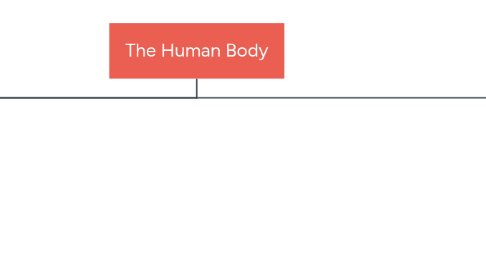
1. Respiratory System
1.1. Major parts
1.1.1. Lungs
1.1.1.1. Gas exchange called respiration or breathing.
1.1.2. Airway
1.1.2.1. Nose
1.1.2.1.1. The nose is a passage way used for smell and breathing.
1.1.2.2. Mouth
1.1.2.2.1. The mouth is the begging of the digestive. The teeth break down food. Saliva makes the food easier to swallow.
1.1.2.3. Pharynx
1.1.2.3.1. The pharynx is part of the digestive and the respiratory system. It processes food and creates a passage way for it.
1.1.2.4. Larynx
1.1.2.4.1. The larynx is the voice box of the human body. It allows you to speak and make different sounds.
1.1.2.5. Trachea
1.1.2.5.1. A long tube that connects the larynx and the voice box.
1.1.2.6. Bronchi
1.1.2.6.1. Carries air between the lungs
1.1.3. Muscles of respiration
2. Circulatory system
2.1. Major parts
2.1.1. The heart
2.1.1.1. Pumps blood to other parts of the body.
2.1.2. Arteries
2.1.2.1. Carries blood from the heart to organs and tissues
2.1.3. Veins
2.1.3.1. Brings back deoxygenated blood to the heart.
2.1.4. Blood
2.1.4.1. Carries oxygen.
2.1.4.2. The hearts muscles need oxygen from which it gets from the lungs. The left side of the heart moves then blood to other parts of the body (systemic loop). This happens after the blood is re-oxygenated. The heart and lungs both work together to get the heart oxygen-rich.
2.1.4.3. Cellular respiration is another connection between our body systems. Cellular respiration in short is a way that the body breaks down things such as glucose using oxygen to create energy or carbon dioxide. Also the process of cells getting usable energy to power other cells is called ATP molecules. The glucose that is used for respiration comes from the digestive system by the use of our cardiovascular system
2.1.4.4. The digestive and circulatory system work very closely together and depend on each other. One way they connect are that they that they both work together to get nutrients.
3. Digestive system
3.1. Major parts
3.1.1. Salivary glands
3.1.1.1. Produces saliva trough a system of ducts
3.1.2. Pharynx
3.1.2.1. It is part of not just the digestive system but also the respiratory system. It is the process of swallowing and the pathway for food.
3.1.3. Esophagus
3.1.3.1. The esophagus is a tube the connects to the pharynx. It functions as a conduit for food and liquids.
3.1.4. Stomach
3.1.4.1. The stomach digests food using acids. The pyloric sphincter is like a valve that allows food to go to the small intestine.
3.1.5. Small Intestine
3.1.5.1. Small intestine carries 90 % of the digested food. It absorbs nutrients.
3.1.6. Large Intestine
3.1.6.1. The storage of faeces and recovery of electrolytes and water.
3.1.7. Rectum
3.1.7.1. Temporary storage area for faeces.
3.2. Accessory Digestive organs
3.2.1. Liver
3.2.1.1. Gallbladder
3.2.1.2. Pancreas
